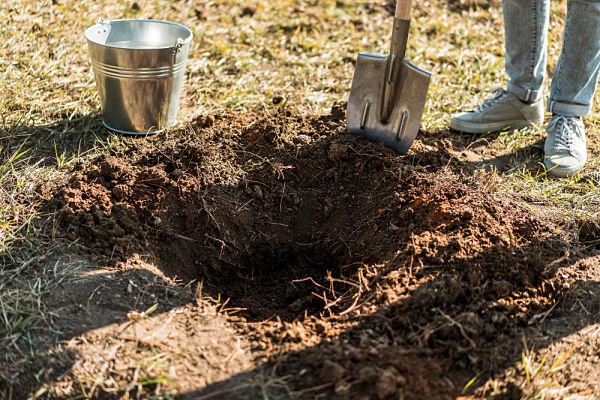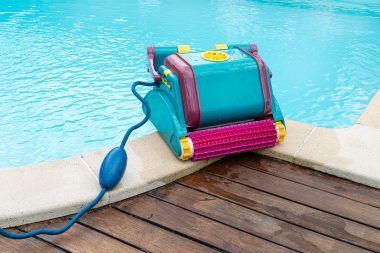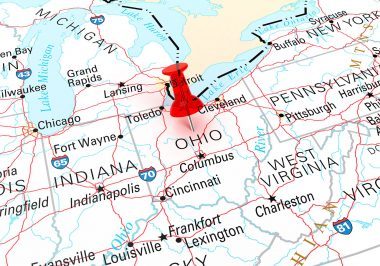How much does a perc test cost, on average?
Top blog articles
If you’re planning to build on a piece of land that isn’t connected to a municipal sewer system, you’ll need a septic system. But before you start installing one, your land must pass a perc test. This essential test determines whether the soil can handle a septic system by measuring how quickly water drains through the soil. Let’s break down everything you need to know about this type of testing, including perc test costs, procedures, and what happens if the land fails the test.
What is a percolation test?
A perc test, short for percolation test, assesses soil’s ability to absorb and filter wastewater. The test helps determine if the land is suitable for a septic system and where the drain field, also known as leach fields, should be located.
The test measures the time it takes for water to seep through the soil in pre-dug holes. Different soil types—like clay, sand, and loam—have different absorption rates, which can impact whether your property passes or fails the test.
Simply put, the percolation test measures water absorption. Only after passing the soil tests, can a builder get the required permit. And, only then can they properly design an adequate septic system for the site.
If the soil on a piece of land fails the perc test, it means that it’s unable to handle liquids within the required percolation range. The septic system could flood in due course or pollute the groundwater. Therefore it’s deemed unsafe to install a septic system there. For a failed perc test, you won’t get approval from the local health department.
Is a perc test absolutely necessary?
A perc test is one of the most common tests undertaken by home builders who have to build on a new plot of land. It is through this soil test that you get the necessary information about the ground you’re building on. Most municipalities mandate such a type of evaluation.
Local health departments often require a successful perc test as part of obtaining a septic permit. The test ensures that wastewater will not pool on the surface or contaminate groundwater, protecting public health and the environment.
Another reason for conducting a perc test is that it measures potential flood risk in areas where there’s a large deposit of water onto the land, either by nature or through planning.
Without a passing perc test, installing a septic system isn’t possible—at least not a conventional one.
Keep in mind that in most areas, a home builder must get a permit before installing a new septic tank or a drainage system (such as French drains). This is dependent on the soil absorption rate or the percolation rate — which should be within the specified range.
As we mentioned before, each jurisdiction has its own laws regarding perc tests. Some areas require a traditional perc test while others specify a deep hole test or a seasonal high water table test. If an official perc test deems that your land meets all local requirements for a septic or drainage system, you can apply for the requisite permit. For instance, a drainage system permit costs $100 to $1,000 — depending on the site size and its conditions. A septic permit that certifies that the land has passed the perc test and complies with environmental standards costs between $200 and $500.
How much does a perc test cost?

A perc test usually costs $750 to $1,850, with most builders spending an average of $1,300. However, keep in mind that the cost of a perc test could go as high as $3,000 depending on the local regulation and the size of the leach field or the required infiltration basin. A standard percolation test is a flat fee of 300 dollars. But it’s a very basic test that evaluates a hand-dug hole, and that too without professional tools.
For more complex scenarios or additional testing requirements, you might encounter hourly fees ($100 to 250 per hour). This is common for deep hole testing or properties with varied soil conditions.
Keep in mind that the perc test cost can vary to a large extent based on the total acreage of land, site location, the number of perc sites, site vegetation, and landscape design. For example, a perc test for a 1-acre site begins at $600.
To give you a better idea, here are some approximate perc test costs according to the different land sizes:
- 0.25 Acre: $150 – $250
- 0.50 Acre: $300 – $500
- 0.75 Acre: $450 – $750
- 1 Acre: $600 – $900
- 2 Acres: $900 – $1,400
- 5 Acres: $1,100 – $2,000
What are the other factors that determine the perc test pricing?
Percolation testing costs tend to be highest when:
- A licensed engineer or soil scientist performs perc tests.
- The testing uses excavation equipment.
- There’s a requirement for multiple perc test holes or test pits — as in the case of a professional perc test.
- Site access is a little difficult or steep.
- There’s a mix of different types of soils such as wet, rocky, or dense soils. Sandy soils tend to be more permeable as compared to heavy clay soils.
- The site location is in a highly regulated area with high building costs.
Read more: Cost of building your own home
What are the steps for a perc test?
- Contact your local authorities: Reach out to your local health or environmental agency to determine if a government agent must perform the test or if you can hire an independent engineer.
- Gear up for site preparation: An engineer will typically survey the land and decide where test holes should be dug. You should factor in the extra cost of the land survey.
- An inspector or engineer conducts the perc test: They dig several holes to a specific depth. These holes are then pre-soaked and filled with water to a measurable level. Experts measure how long it takes for the water to absorb into the soil.
- Understand percolation rates: Septic systems generally require a percolation rate between 60 minutes per inch and 150 minutes per inch.
- Interpret results: If the soil is too slow (not permeable enough), the drain field will fail to work efficiently. If the soil is too fast (too permeable), it may pose a groundwater pollution risk by allowing effluence to seep through too quickly.
Read more: Where are the best places to search for cheap land?
What happens if a piece of land fails the perc test?
Failed perc tests can be a dealbreaker for buyers considering undeveloped land, so it’s crucial to have the test done before committing to a purchase. If the perc test results indicate poor drainage, there are a few potential outcomes:
- You may need to invest in an engineered or alternative septic system, which can work with challenging soil conditions but typically costs more to install.
- You may need to reposition the drain field. Sometimes, testing in a different location on the property may yield better results.
- In some cases, land that fails the perc test isn’t usable for residential development unless you find another solution for wastewater management.
How can I do a perc test myself?

If you only need a perc test for gardening or landscaping purposes, you can manage a simple perc test as a DIY project. All you need is a shovel and tape measure. A licensed landscaper or a gardener may be able to help you with the test. They might charge $25 to $100 depending on how many holes are dug and the time taken.
Remember that while you might be tempted for performing a perc test to save money, it’s not recommended. Local regulations often require the test to be conducted by licensed professionals or under the supervision of the health department. Professionals also ensure accurate results, helping avoid costly mistakes during septic system installation.
Read more: Why is USIC at my house
How long is a percolation test good for?
Every local health department has its own rules and regulations regarding the length of time for which perc tests are valid. Generally, perc test results are valid for two to five years after which you’ll need a renewal.
Before renewing your septic permit, the Department of Health decides if additional testing is needed based on the previous test results. It’s how the government agencies ensure that all the perc tests abide by the current regulations.
Generally, a soil evaluation conducted by a licensed soil scientist does not expire unless the drain field and its soil conditions physically change.
Key takeaway
Perc tests and their requirements vary widely from one place to another. It’s best to contact your county health department if you’re planning to request such a test. Remember this test is a critical step in the land development process, especially for properties without access to municipal sewer systems. Although the costs include a range of factors—from permits to testing fees—the investment ensures your septic system will function correctly and safely. For landowners, understanding the nuances of perc tests can save time, money, and headaches.
Read more: A complete guide on home sewer maintenance










Your opinion matters, leave a comment